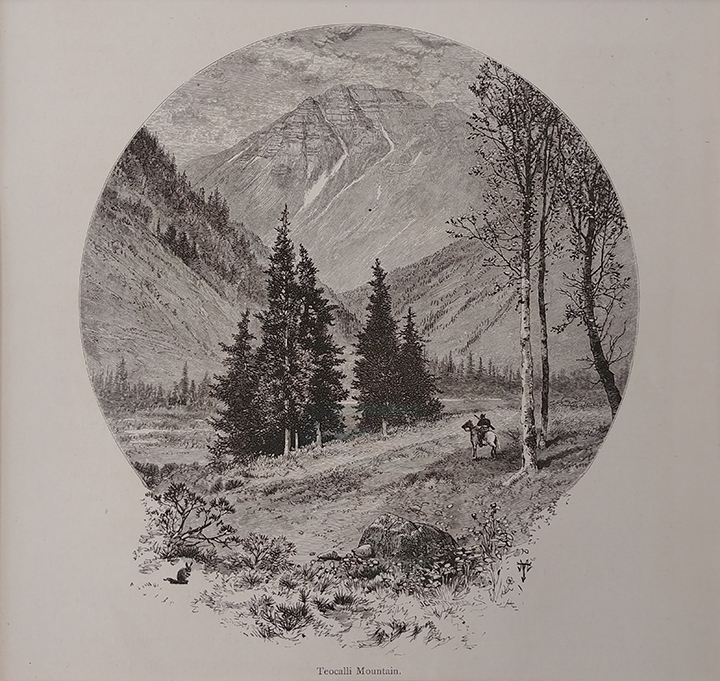Picturesque America published in 1874 by D. Appleton and Company has been called “the most magnificent illustrated work ever produced in America”. This two volume, leather-bound, gold leaf decorated coffee table book remains one of the most beautiful publications from the 19th Century. It presented “the most unfamiliar and novel features of American scenery” and unspoiled American landscapes that were being explored by the newly created United States Geological Survey (Anderson 315-316). Edited by noted poet, William Cullen Bryant, the publication included over 900 wood and steel engravings by the most eminent artists of the day. The industrialization of the late 19th Century brought trains and Western civilization to the edge of wild places making them accessible to artists which in turn captured the fascination of the American public.
The six pages on display in this exhibition recount the story of the Hayden survey party’s visit to the Elk Mountains in 1873. Their route took them from Twin Lakes at the foot at Independence Pass, over Red Mountain Pass into the valleys surrounding Teocalli Mountain. The expedition party was truly impressed. They wrote, “The view from our camp is- we should say surpassing, could we remember or decide which of all the beauties we have is the grandest”. It was during this trip in 1873, Teocalli was also named by the party after the Aztec word, which they believed, meant “pyramid of sacrifice”. In Nahuatl, the language commonly known as Aztec, the correct interpretation is actually “God House”.
It was common for sketches and photographs from the Hayden expedition to be used as reference to create the illustrations for Picturesque America. We are fortunate to have a regional example of how one of these images made its way from the Hayden expedition to the American public. On page 497, is a wood engraving of Teocalli Mountain by J.G. Smithwick from an illustration by Thomas Moran. Moran stayed mostly true to the photograph by William Henry Jackson from the 1873 survey incorporating only a few moments of artistic license.
Compare the Moran wood engraving with the Jackson photograph of Teocalli hanging on your right to see the artistic license Moran took in his interpretation.

